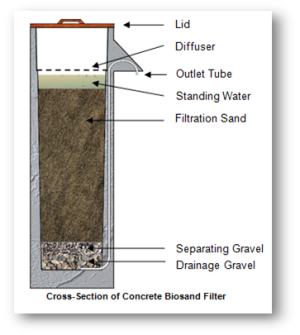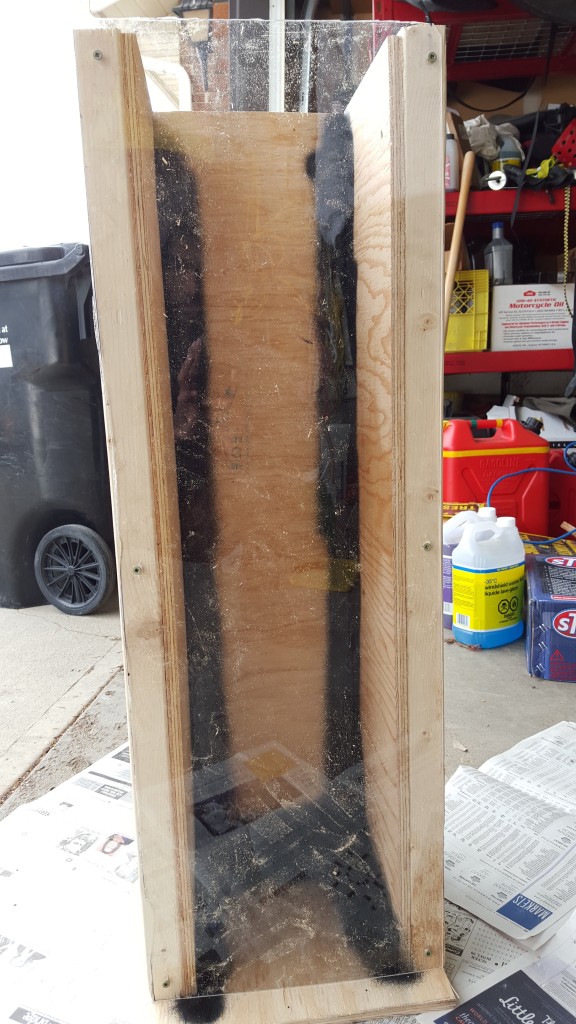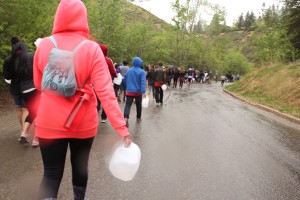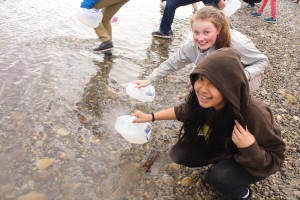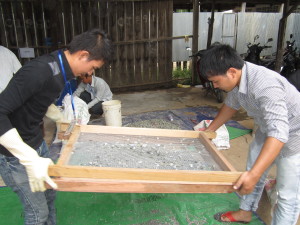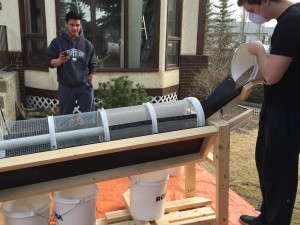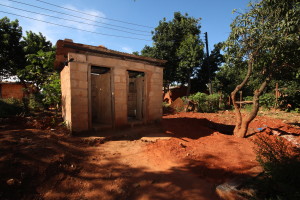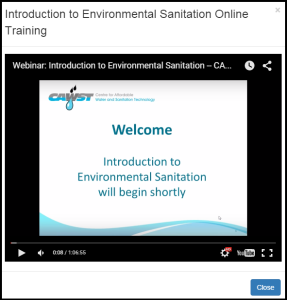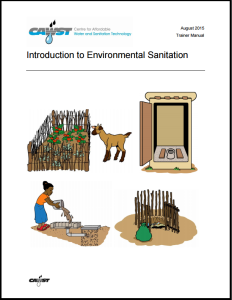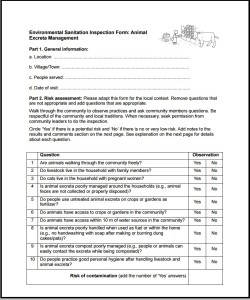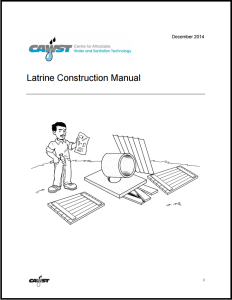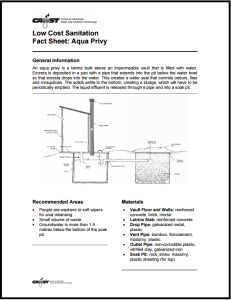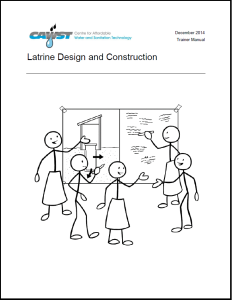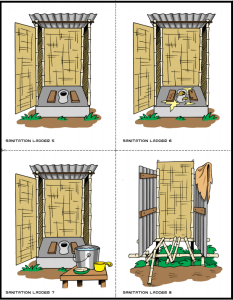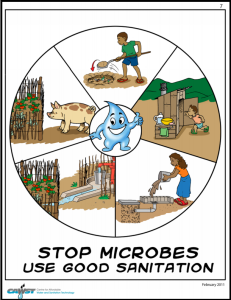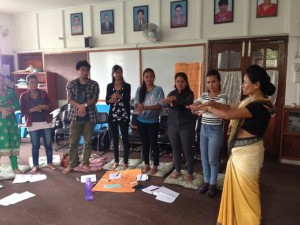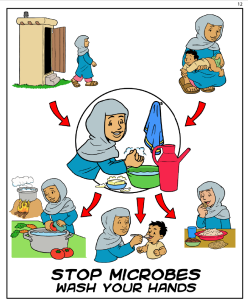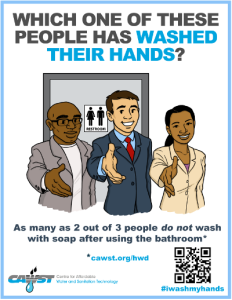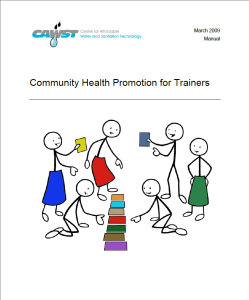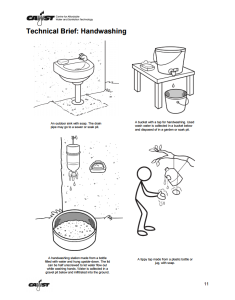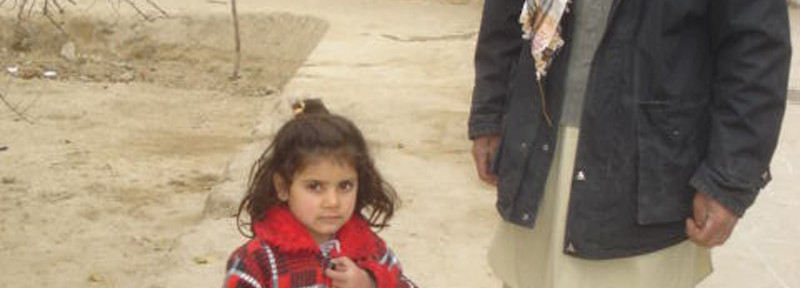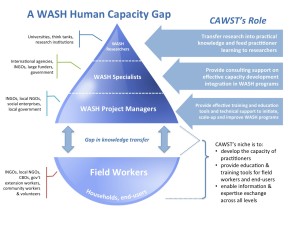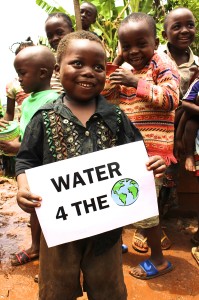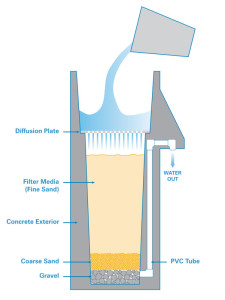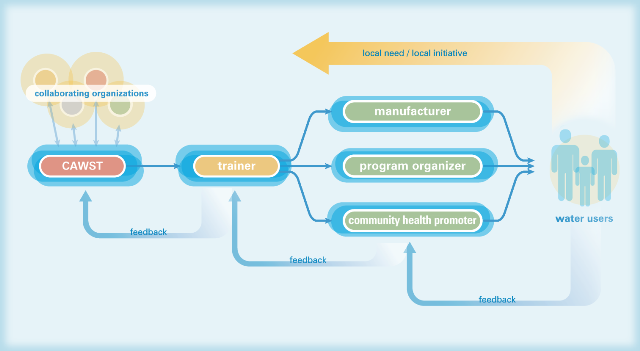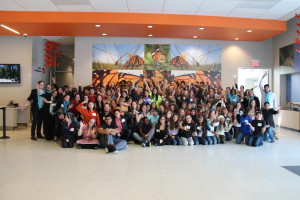Calgary, Canada – From September 2015 to March 2016, CAWST worked with a team of fourth-year engineering students from the Schulich School of Engineering at the University of Calgary. With CAWST as their sponsor organization, students completed their Capstone project, tackling real-world problems to apply their technical knowledge and develop professional skills. Their objective was to explore ways to optimize the performance of the underdrain gravel separation layer of the biosand filter. This article discusses some of their findings.
The biosand filter is a water filter made up mainly of sand, gravel and cement, which are affordable materials found virtually anywhere around the world. The filter is highly effective in removing pathogens from drinking water, serving as a viable option in reducing water-related illness. It requires three layers of sand and gravel to function. The first layer is filtration sand, which is a very fine grain size, followed by a separation gravel layer, of an intermediate grain size, and finally the underdrain gravel, which has the largest grain size.
Our project was composed of multiple parts. The first part was a literature review of how the underdrain works as the bottom layer of the biosand filter in supporting the upper layers and allowing water to drain through the filter. The second part was to design an experiment to test different underdrain configurations. The third part was to optimize the underdrain parameters such as gravel size and layer thickness to optimize the performance of the biosand filter.
In order to properly test different gravel sizes and configurations, an experimental setup was first designed. Our constraints were that it needed to be easy to build and the experiments needed to be easy to observe. With these constraints in mind, we constructed 3 identical wooden boxes with dimensions of 8”x 8”x 36” and one wall being clear plastic. The purpose of this clear plastic wall was to observe any sand that was migrating through the separation gravel layer and into the underdrain layer. To seal the cracks between the biosand filter walls, we attempted initially to use flex seal and silicone. This seal contained the water for approximately 30 minutes until large leaks developed. The next and final solution was to use clear plastic garbage bags on the inside of the boxes which stopped water from leaking out of the biosand filter. The disadvantage to this method was decreased visibility of the migrating sand particles through the clear plastic.
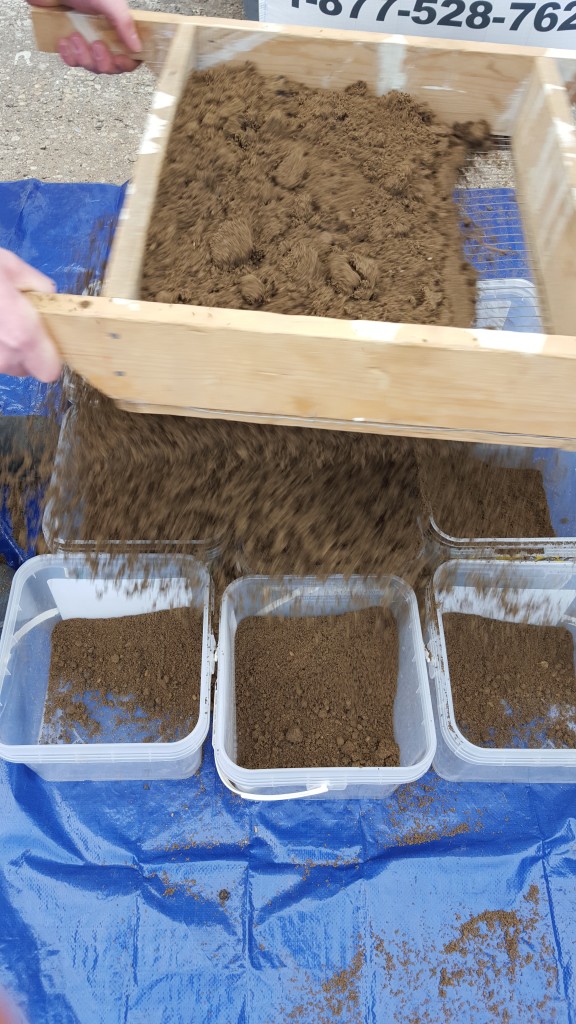
Upon completion of the testing prototype, to the gravel sizes and configurations for testing were then determined. Grain size is specified most often by ‘effective size’ or d10. Effective size is defined as the size of the sieve opening through which 10% of the material (by weight) will pass through. Also, any other size can be found – for example d60 is the size through which 60% of the material will pass through. The coefficient of uniformity, U is defined as d10/d60. For the CAWST biosand filter, the sand specifications are to have a d10 of 0.15mm to 0.2mm and a uniformity coefficient of between 1.5 and 2.5. The separation gravel does not have an effective size or coefficient of uniformity specified, just that it should be between 0.7 and 6 mm. Similarly, the underdrain layer has a specified size range of 6-12mm.
We came up with three configurations to test:
Configuration 1:
This test uses the CAWST Biosand Filter specifications for sand and gravel sizing and is summarized in the table below. This test was used as a control to judge test configurations 2 and 3 against.
Configuration 2:
The underdrain size for configuration 2 is larger than that of configuration 1. The following specifications were chosen to comply with the d10 (bottom layer) ≥ 2 d (drain orifice diameter) rule developed by Huiseman and Wood [1]. This rule was developed to prevent the underdrain from clogging the outlet tube. This larger underdrain should help prevent that.
Configuration 3:
For configuration 3, the filtration sand and underdrain gravel sizes are the same as in configuration 1. The separation gravel size stays the same but a new interface gravel layer was added. This configuration was designed to conform with the rule d10 (top gravel layer)/d85(sand) ≤ 4. This rule was also developed by Huiseman and Wood [1], and helps to prevent the filtration sand from migrating into the underdrain layer.
We ran a large amount of water through each configuration for two weeks. Our results are tabulated in Table 4:
From Table 4 above, it can be seen that experiment 2 was the most effective model a smaller mass of sand migrated into the underdrain. It produced the best results in terms of mass of sand found in the underdrain and was comparable to the other two in terms of flow rate.
Further experimentation is required to verify these results and to continue to optimize the design. There were a number of factors which may have impacted the results from these initial experiments which should be considered in the interpretation of results and to improve future testing. The first factor which impacted results was the temperature of the space where the Biosand filters were stored. Due to below freezing temperatures, the water in the filters had been through a cycle of freezing and thawing multiple times. Additionally, it was difficult to decide how to separate the underdrain layer from the sand layer in order to determine the mass of sand which had migrated into the underdrain. This was facilitated by a visual inspection and manual separation, which would vary slightly in each case and impact the mass of sand found in the underdrain. A more precise or consistent method of separating the underdrain layer from the sand layer before measuring the mass of sand which had migrated in the underdrain could improve the consistency and accuracy of results. Core sampling and freeze sampling tools could be explored further to potentially assist in improving this process, however could not be acquired for this series of tests.
We are grateful to CAWST for sponsoring this project, and to and Tommy Ngai, M.E., Ph.D. and Laura MacDonald, B.Sc., MSE for their guidance as we progressed through this project.
Citation
(1) Huisman, L., & Wood, W. (1974). Slow Sand Filtration. Geneva: World Health Organization
This article was written by Jordan McFleming, a final-year engineering student at the University of Calgary, who carried out this Capstone research project along with Raveen Fernando, Ramndeep Khosa and Harsimer Rattan.


